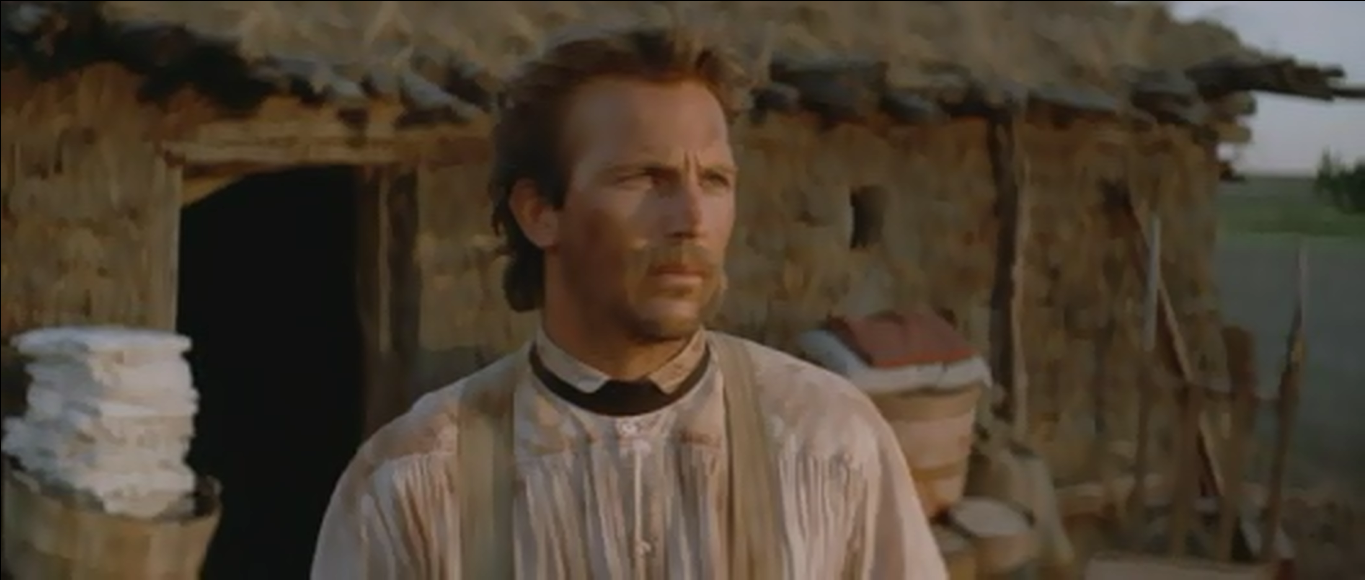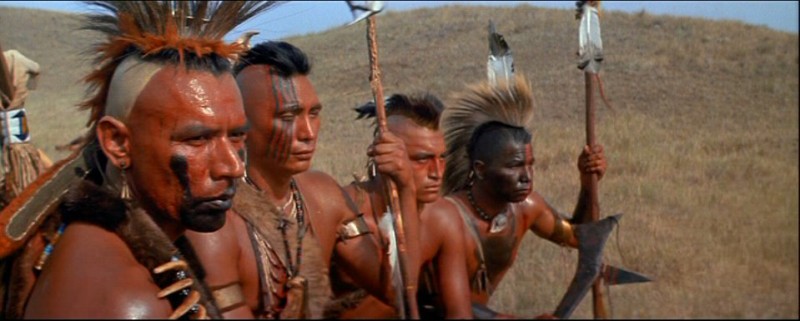 The Film Dancing With Wolves, directed by Kevin
Costner, displays many stereotypes and double standards on both the Native
American side and the white settler’s side.
The film takes place in 1863 during the Civil War. The main character, Lt. John Dunbar, is
relocated at a rundown abandon post on the frontier. The post is dirty with trash everywhere and
dead dear carcasses in the pond near by.
Not cleaning up after ones self is an example of white person’s
stereotype. Native Americans tend to
respect nature, where as White people tend to leave their trash behind for
someone else to deal with it. Lt. Dunbar
and his driver partner encounter several American Indians during their journey. After the driver drops Lt. Dunbar off at his
post, a Pawnee tribe kills him on his returning trip. This scene has several stereotypes displayed
about Pawnee including their way of dress and their aggressiveness. The film showed the Pawnee tribe with traditional
clothing and face paint on, which is only worn during important
ceremonies. The film also shows the
Pawnee as violent with no mercy to anyone disturbing their land. The driver is shot down with arrows and is
scalped to the death. Many of the Pawnee
today are unhappy with this interpretation of them in the film. During Lt. Dunbar’s stay, Kicking bird,
Native American children, and Wind in His Air approaches his base at different
times. Lt. Dunbar eventually sees
himself as a target of the Native people and decides to go out and confront
them. He dresses in his finest Union
uniform and sets out on his horse with the American flag in hand. This poses as a double standard because when
white people dress up for battle, they are seen as “civilized.” When Native Americans dress for battle, they
are seen as “savage.” This film
accurately represents stereotypes and double standards on both sides.
The Film Dancing With Wolves, directed by Kevin
Costner, displays many stereotypes and double standards on both the Native
American side and the white settler’s side.
The film takes place in 1863 during the Civil War. The main character, Lt. John Dunbar, is
relocated at a rundown abandon post on the frontier. The post is dirty with trash everywhere and
dead dear carcasses in the pond near by.
Not cleaning up after ones self is an example of white person’s
stereotype. Native Americans tend to
respect nature, where as White people tend to leave their trash behind for
someone else to deal with it. Lt. Dunbar
and his driver partner encounter several American Indians during their journey. After the driver drops Lt. Dunbar off at his
post, a Pawnee tribe kills him on his returning trip. This scene has several stereotypes displayed
about Pawnee including their way of dress and their aggressiveness. The film showed the Pawnee tribe with traditional
clothing and face paint on, which is only worn during important
ceremonies. The film also shows the
Pawnee as violent with no mercy to anyone disturbing their land. The driver is shot down with arrows and is
scalped to the death. Many of the Pawnee
today are unhappy with this interpretation of them in the film. During Lt. Dunbar’s stay, Kicking bird,
Native American children, and Wind in His Air approaches his base at different
times. Lt. Dunbar eventually sees
himself as a target of the Native people and decides to go out and confront
them. He dresses in his finest Union
uniform and sets out on his horse with the American flag in hand. This poses as a double standard because when
white people dress up for battle, they are seen as “civilized.” When Native Americans dress for battle, they
are seen as “savage.” This film
accurately represents stereotypes and double standards on both sides.
Dancing With Wolves also incorporates Pathos and post-traumatic
stress. Pathos is an appeal to emotion, and is a way of convincing an audience of an
argument by creating an emotional response.
A good example of ethos is when Lt. Dunbar solely rides across field in
Christ pose, while being shot at by the entire confederate army. The music and the intensity of this scene
draws the viewers eyes in and it connects to them emotionally. Another example of pathos is when Lt. Dunbar
travels across the frontier. The film
displays large pretty landscapes with dignifying music playing in the
background as Lt. Dunbar embarks on his voyage.
This film can connect to its viewers in a feel good emotional way, but
can also be very realistic with Post-traumatic stress. Although it was not diagnosed back in the
Civil War era, it still frequently occurred.
The general that assigned Lt. Dunbar to his new post is an example of a
person with post-traumatic stress. He did
not care about his job, was constantly drunk, and felt the guilt of moving all
the Native Americans off their homeland.
He didn’t even care about himself so much that he pissed his pants in
front of Lt. Dunbar and then later committed suicide. Post-traumatic stress was very real back then,
and is still a major issue today.
Overall, Dancing With Wolves uses
pathos to connect to the viewer and shows the first time cases of Post-traumatic
stress.

No comments:
Post a Comment